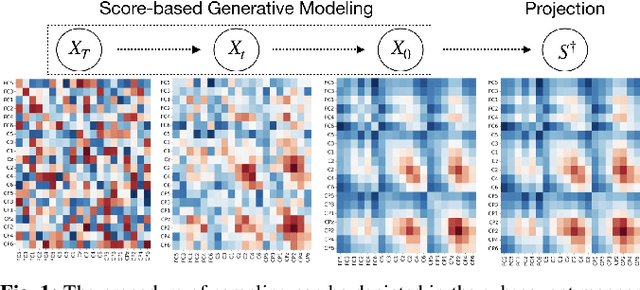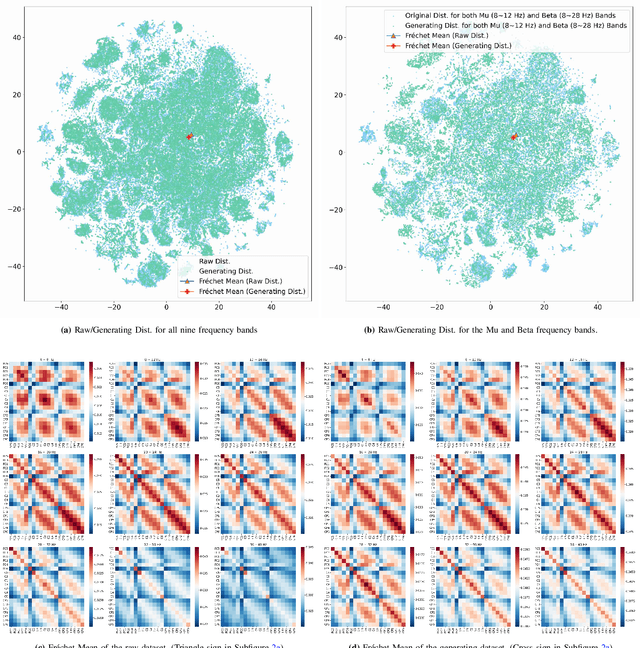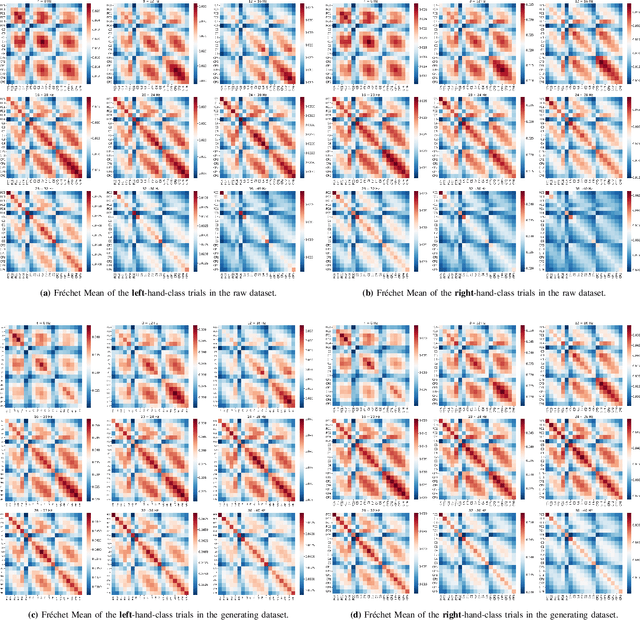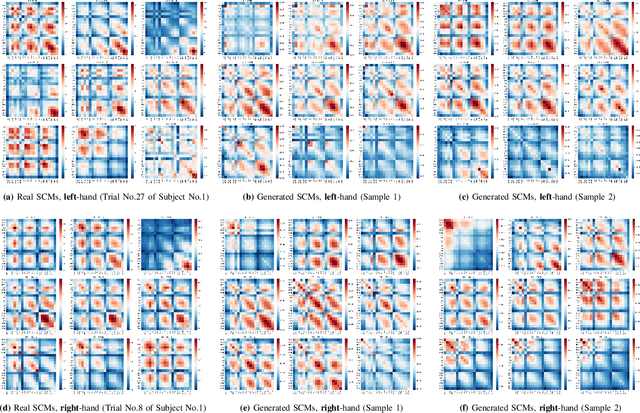Reinmar Josef Kobler
Score-based Data Generation for EEG Spatial Covariance Matrices: Towards Boosting BCI Performance
Feb 22, 2023



Abstract:The efficacy of Electroencephalogram (EEG) classifiers can be augmented by increasing the quantity of available data. In the case of geometric deep learning classifiers, the input consists of spatial covariance matrices derived from EEGs. To synthesize these spatial covariance matrices, we propose a generative modeling technique based on state-of-the-art score-based models. The quality of generated samples is evaluated through visual and quantitative assessments using a binary-class motor imagery dataset. The exceptional pixel-level resolution of these generative samples highlights the formidable capacity of score-based generative modeling. Additionally, the center (Frechet mean) of the generated samples aligns with neurophysiological evidence that event-related desynchronization and synchronization occur on electrodes C3 and C4 within the Mu and Beta frequency bands during motor imagery processing. The quantitative evaluation revealed that 84.3% of the generated samples could be accurately predicted by a pre-trained classifier and an improvement of up to 8.7% in the average accuracy over ten runs for a specific test subject in a holdout experiment.
 Add to Chrome
Add to Chrome Add to Firefox
Add to Firefox Add to Edge
Add to Edge